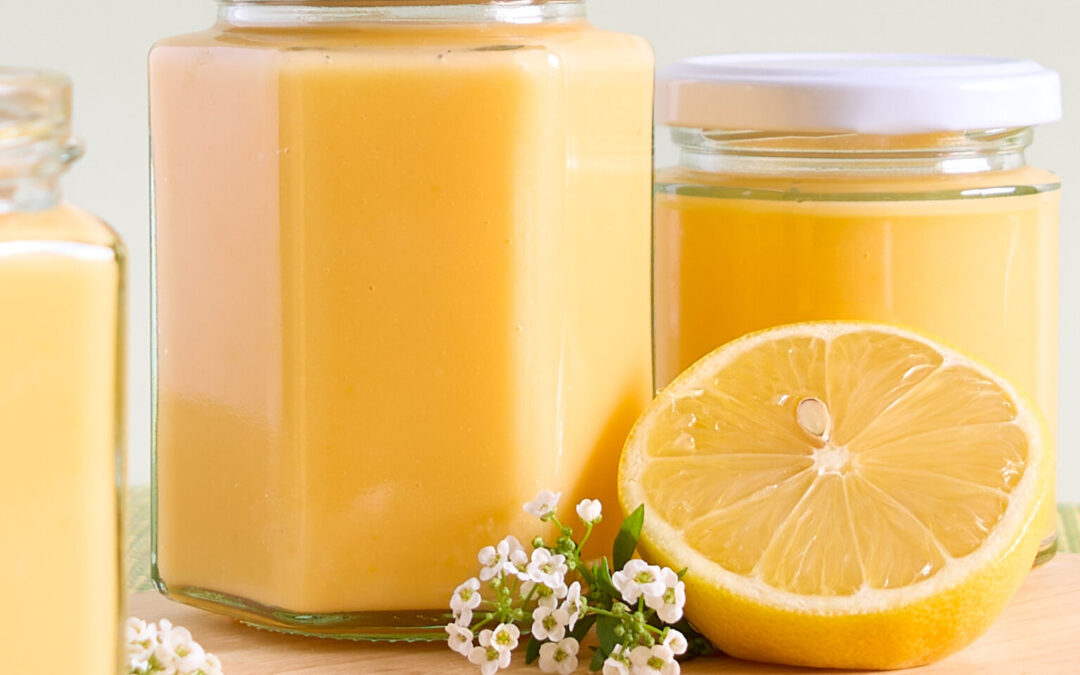The best lemon curd recipe starts and ends with your blender, Vitamix, Thermomix, Nutribullet, or Ninja. It is literally a three-step method, blend, cook, strain. Oh yes, enjoy, that’s four!
There is no standing over a double boiler whisking in butter and hoping the curd won’t curdle. I dare to suggest this blender lemon curd recipe is almost foolproof. All the ingredients (except the gelatine) are processed and then brought to a boil over a low to medium heat.
Using egg yolks makes a richer thicker curd that is a bit more forgiving while cooking then when using whole eggs. I have added gelatine to this recipe as it ensures you have a well-set curd that can be used cold to fill tart shells or swirled into frosting in recipes like my Lemon Curd Swirled Sheet Cake recipe. Feel free to skip the gelatine if you want a slightly runnier curd.
This recipe makes just over 2 cups of curd (approximately 600ml) and will last up to a week in the refrigerator.
If you would like to make Thermomix lemon curd, I have provided the method in the notes to the recipe.
Lemon curd ingredients
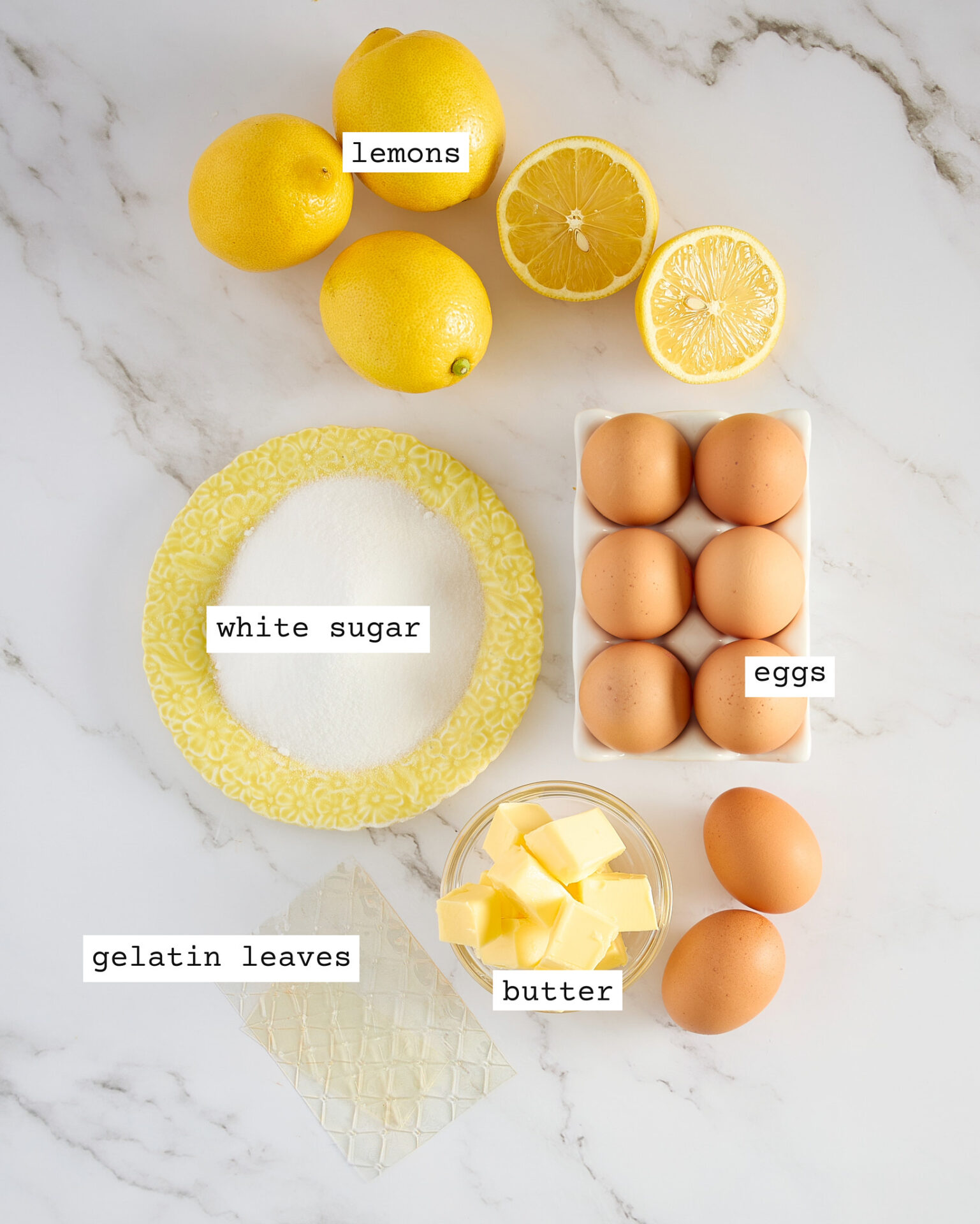
Gelatine is your secret ingredient

I prefer using gelatine leaves over powder, as the leaves melt more reliably than the powder. Our Australian brand McKenzie’s has recognised at last that gelatine leaves are no longer just in chef territory, and they are putting their own brand on the grocery store shelves.
I have based this recipe off the McKenzie’s brand of gelatine leaves, which are platinum strength. If you are using a different brand, you just need to be able to weigh the leaves or figure out how much each leaf weighs. This recipe calls for 3.5g of gold gelatine leaves, which equates to 2 McKenzie’s gelatine leaves (they are platinum strength but a smaller than usual size).
I know gelatine can get pretty technical but if you do not have a scale and you can get McKenzie’s leaves you need 2 leaves.
And if you want to revert to powdered gelatine, you can use 1 teaspoon of McKenzie’s powdered gelatine (or any 210 – 230 bloom gelatine) and follow the instructions on the container.
Tips to remember:
- Place gelatine leaves in a bowl of cold water and only leave submerged until just softened. Then squeeze out all the excess water before adding to your hot curd.
- Remember to add the gelatine at the very end of cooking the curd, as boiling the gelatine can destroy its structure and, as a result, it may not set.
- If the curd sets too firm and you want it looser, you can whisk the curd or use an immersion blender to soften it up. But don’t blend too long or, again, you can destroy the structure of the gelatine and the curd will go runny.
Get your blender out!
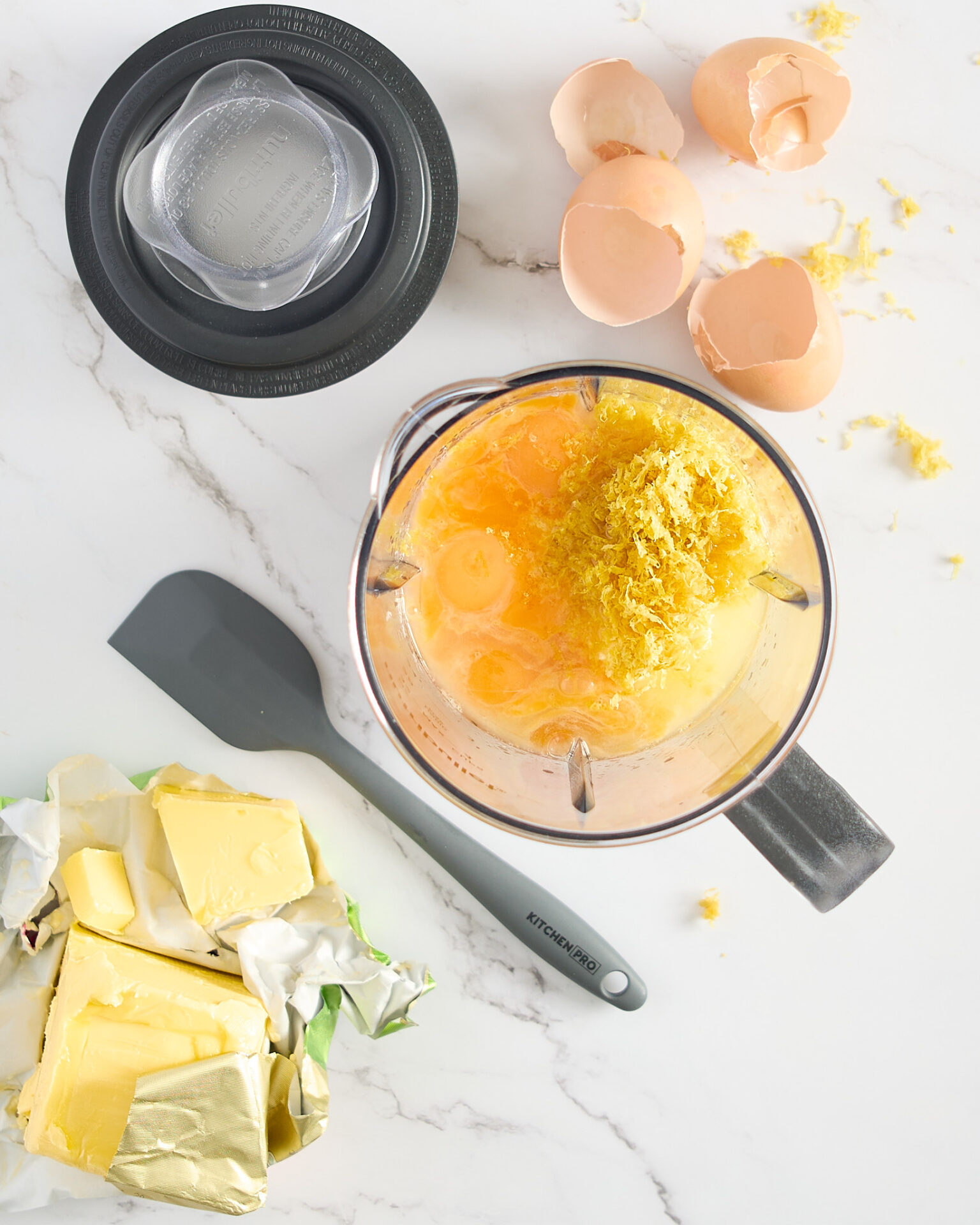
It you want an easy lemon curd it’s just a matter of getting your blender out. The butter doesn’t even need to be soft. I weigh my ingredients into the blender jug as it sits on the kitchen scale.
260g of egg yolks equates to about seven large whole eggs. I would recommend weighing as you separate the eggs but this is a recipe where it doesn’t matter if a bit of egg white gets into the mix.
Blend on high speed
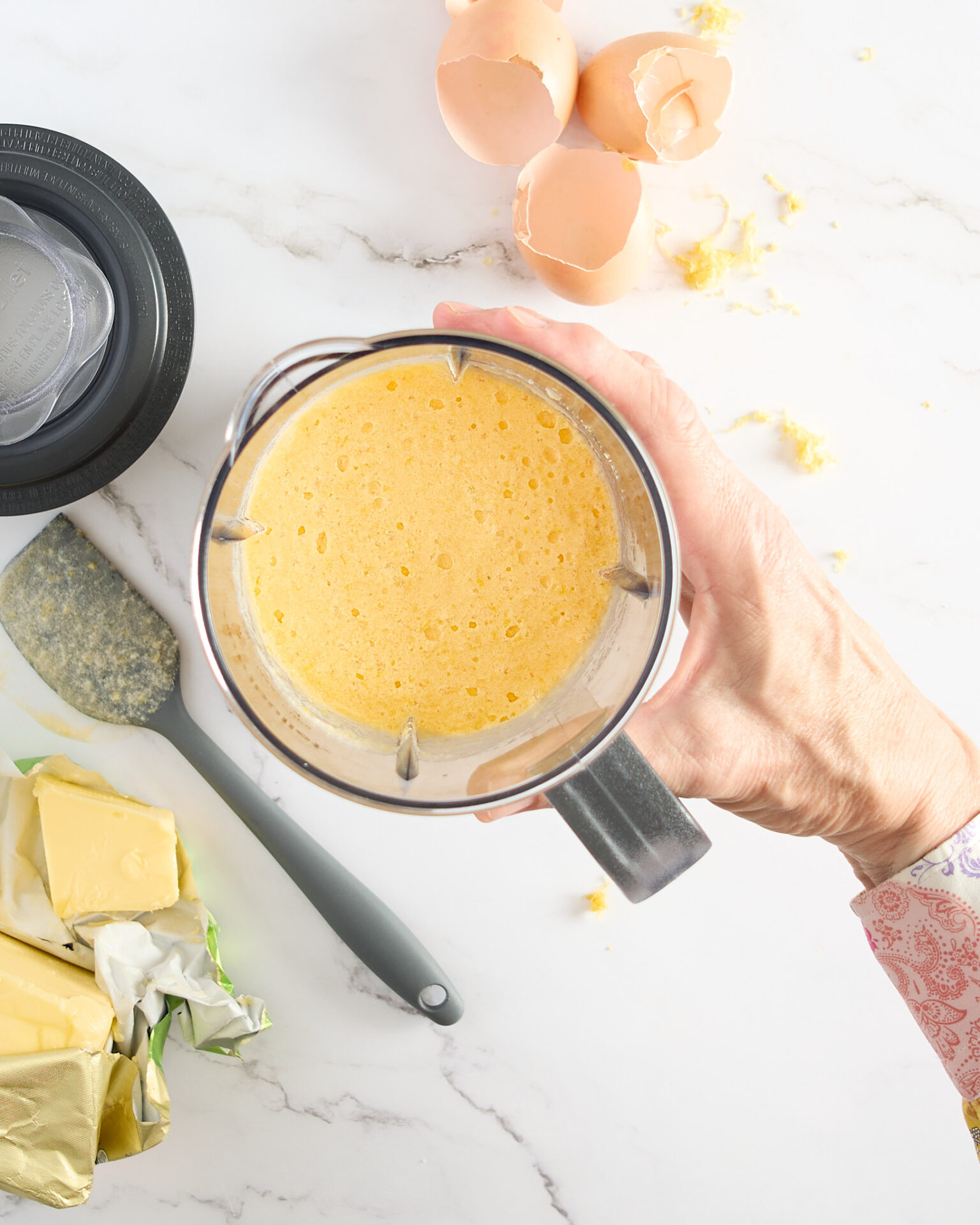
You want to blend the ingredients on high speed until they look well emulsified. But it’s definitely going to look curdled. I have used my Nutribullet in the photos for this post.
If you would like to make the Thermomix lemon curd method, check out the notes to this recipe. Personally, it’s my go to method. I get great joy out of letting the Thermomix stir and cook the curd, while I am free to get on with the other recipes on my list for the day.
When is the curd cooked?
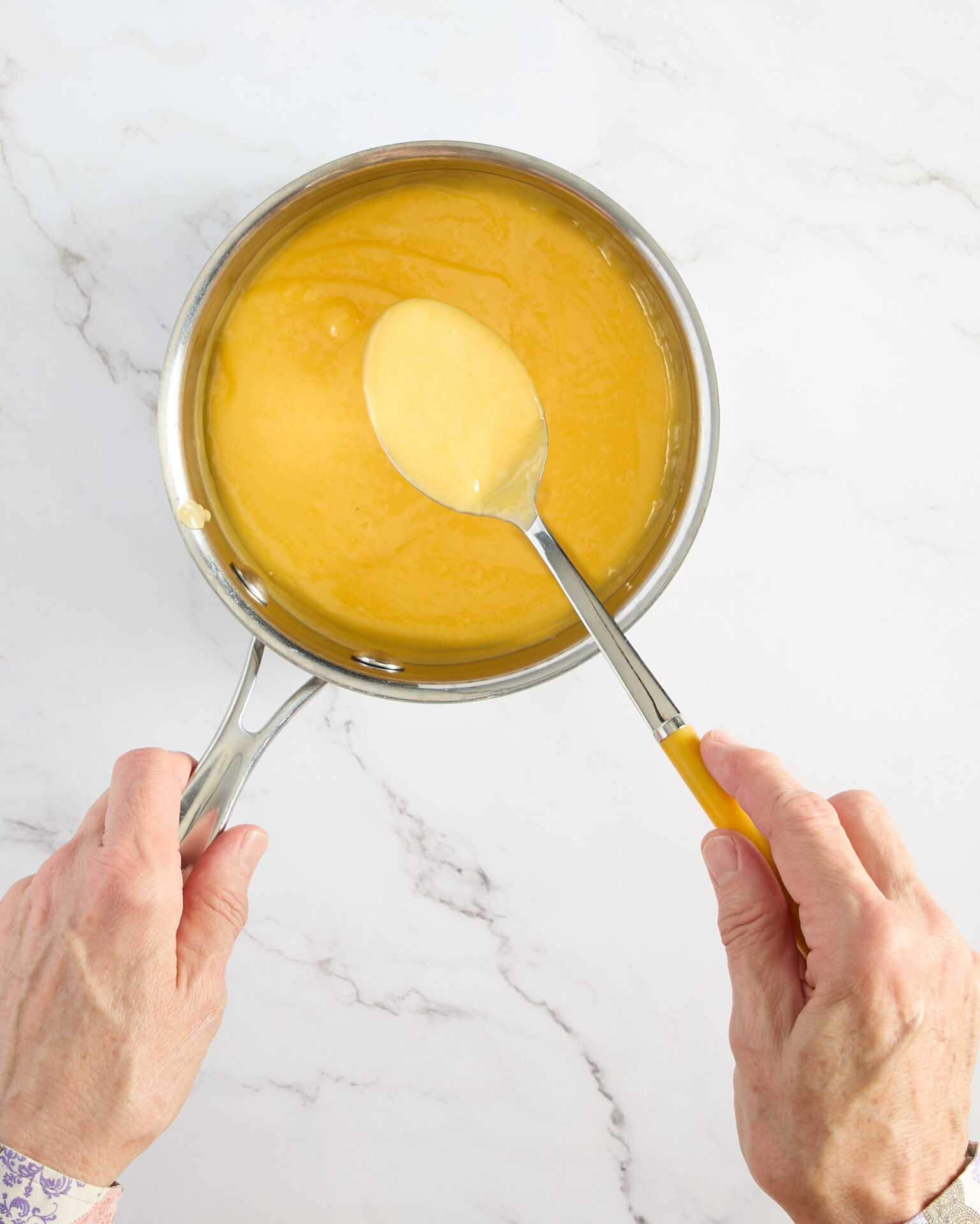
I recommend using a small stainless-steel pan with a heavy bottom. Pour the blended curd mixture into the pan. Not the gelatine – it will be added at the end.
Heat the curd gently on medium low heat, stirring constantly with a whisk or rubber spatula.
Bring the curd to a boil. The curd will thicken and produce a few slow plopping bubbles. You dont’ want to wait for a full boil.
I take temperature readings as I go just to be sure. The egg yolks will have coagulated at between 76°-82°C. Don’t let it go past 82°C as the curd may curdle.
Remove the pan from the heat and add the softened gelatine leaves, stirring well until all the gelatine is melted.
Pass the curd through a sieve
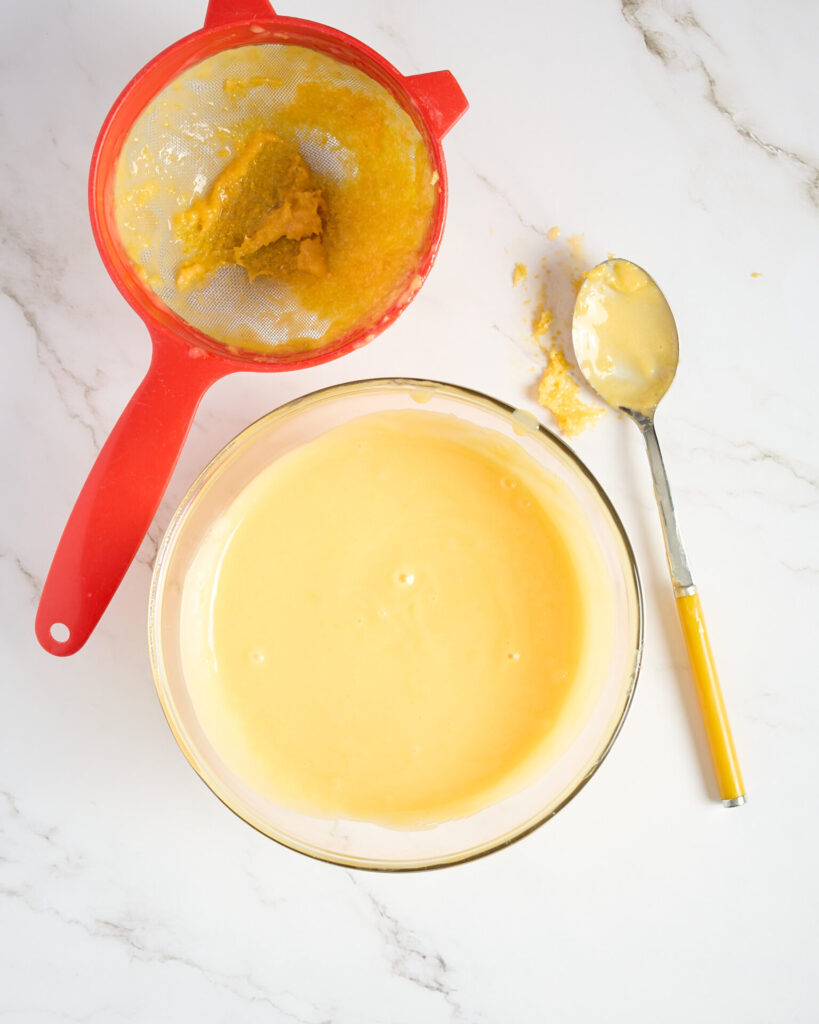
This is the best lemon curd recipe because of its lemony punch that comes from the addition of lemon zest. However, you need to strain off that zest and any cooked egg protein to produce a super smooth curd.
If you want a nice set curd, let if firm up for a few hours or overnight in the refrigerator before using it. If you are filling blind baked tart shells you can fill them at this stage before refrigerating overnight. This will produce a soft set curd without going back into the oven.
If you feel the curd is a bit too firm, you can whisk the curd gently by hand or use a handheld immersion blender. Don’t over blend as you risk destroying the gelatine structure and ending up with a runny curd.
This blender lemon curd is swirled into both the whole lemon cake and the vanilla cream cheese frosting in my Lemon Curd Swirled Sheet Cake recipe.

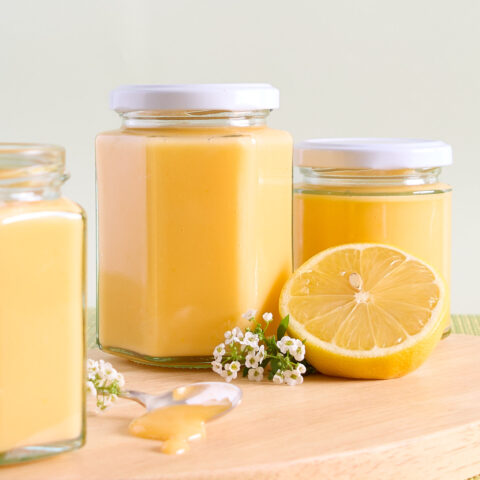
Lemon Curd
Equipment
- Food processor or blender
- Medium stainless steel heavy bottom pot
- fine sieve
- 750ml sealed storage container
Ingredients
- 340 g lemon juice (approximately 7 medium lemons)
- Zest of all the lemons
- 220 g caster sugar
- 145 g unsalted butter
- 260 g egg yolks (approximately 7 large eggs)
- 3.5 g gold gelatine leaves (2 McKenzie’s platinum leaves)
Instructions
- Soak the gelatine in a bowl of cold water until soft, then squeeze out excess water and set aside.
- Zest lemons into the blender jug.
- Juice enough lemons for 340g of lemon juice and add to blender jug.
- Add the butter in cubes to the blender jug along with the sugar.
- Separate the eggs and add 260g of yolk to the blender jug (the whites are not used in this recipe).
- Blend the ingredients on high for about 1 minute.
- Pour the curd into the pan over a medium low heat, scrape out the blender jug into the pan.
- Stir constantly with a rubber spatula for approximately 10 minutes until the curd thickens and comes to the boil (slow plopping bubbles). If using a thermometer the temperature should be between 76°-82°C.
- Remove from the stove and add the softened gelatine, stir until the gelatine melts completely.
- Pass the curd through a fine sieve and store in a sealed container in the refrigerator until needed.

